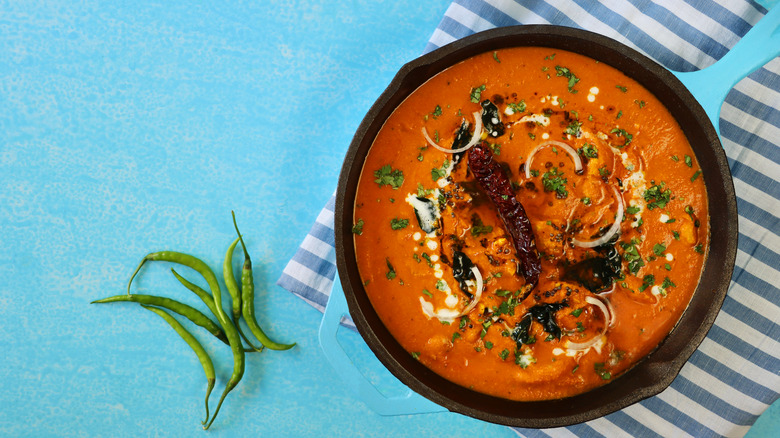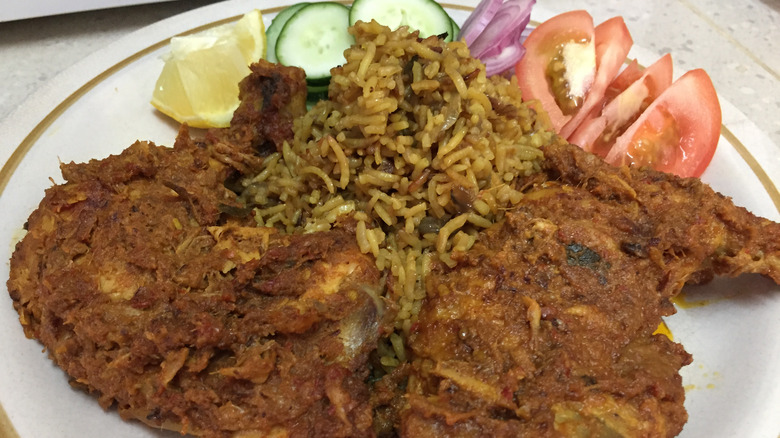Bhuna Is The South Asian Cooking Method For Ultra-Caramelized Sauces
Few foods deliver layers of aromatic flavor quite like an Indian-style curry. Sure, the ingredient list for a dish like Tikka Masala is extensive, but how does it all come together in harmony? Knowing some handy techniques can go a long way. Blooming spices in oil is a must, as is deftly navigating cooking times. To form an even thicker — and more aromatic — caramelized sauce, turn to the Bhuna technique. Hailing from Northern India, Pakistan, and Bangladesh, it's a method that was once reserved for aristocrats but is now common in the South Indian continent.
The bhuna method is all about keeping the moisture content low, so a repeated sequence of caramelization and deglazing is achieved. It begins by heating fat — typically ghee or another high-heat oil in pan. Then, separately, the spices, aromatics, veggies, and meats are introduced to the oil and fried so their flavor is incorporated into the sauce as the moisture evaporates. The process is repeated several times, and the mixture is constantly stirred as the water evaporates and the sauce thickens. Let's dive into some applications.
Bhuna is useful for both South Asian classics and innovative applications
Some may mistake bhuna as being a dish all its own, but it's actually just a preparation style. An easy thing to confuse since many restaurants list curries with a bhuna moniker, but this versatile application is a method one could apply to a variety of dishes. A classic example prepared with the technique is Bangladeshi wedding roast chicken. Chili-coated chicken gets a first initial fry, just a few minutes to caramelize the outside. Next, an array of spices are cooked into an orange paste in the ghee. The pan is then deglazed with water, and once reduced, the chicken gets a final round of simmering to cook it to perfection. Such repeated iterations of deglazing and simmering infuse spices and yield a tender result.
The process of assembling flavors using a limited amount of moisture also applies to a much broader range of applications. In pasta sauce recipes, for example, the tomato base will infuse with much more aromatic flavors if gradually cooked in oil. However, the variation in ingredients and the consequent flavors and aromas make this sauce method of the Asian subcontinent a truly unique one, and to properly apply the method, a curry really is the best place to start.

